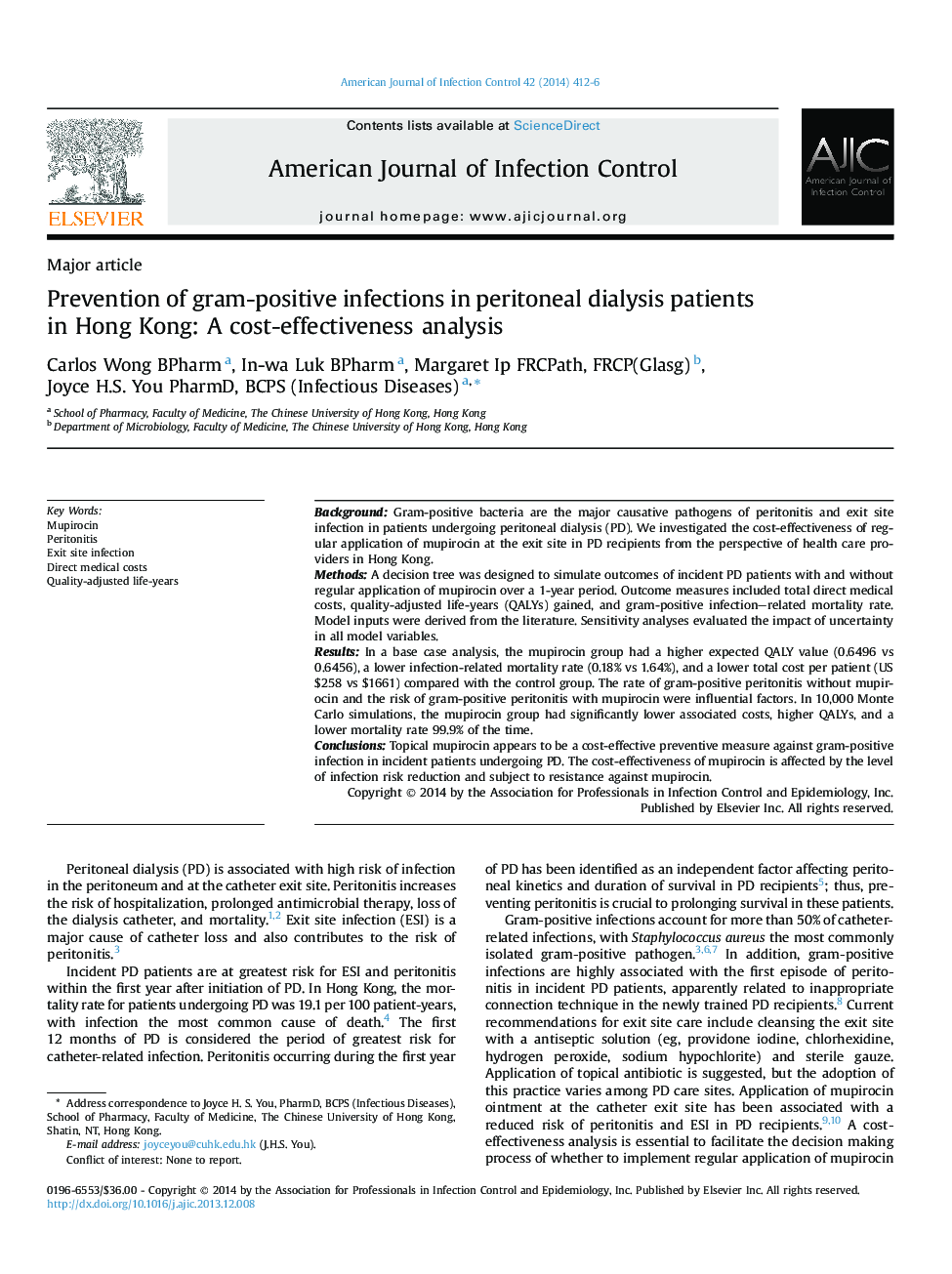| Article ID | Journal | Published Year | Pages | File Type |
|---|---|---|---|---|
| 2639312 | American Journal of Infection Control | 2014 | 5 Pages |
BackgroundGram-positive bacteria are the major causative pathogens of peritonitis and exit site infection in patients undergoing peritoneal dialysis (PD). We investigated the cost-effectiveness of regular application of mupirocin at the exit site in PD recipients from the perspective of health care providers in Hong Kong.MethodsA decision tree was designed to simulate outcomes of incident PD patients with and without regular application of mupirocin over a 1-year period. Outcome measures included total direct medical costs, quality-adjusted life-years (QALYs) gained, and gram-positive infection–related mortality rate. Model inputs were derived from the literature. Sensitivity analyses evaluated the impact of uncertainty in all model variables.ResultsIn a base case analysis, the mupirocin group had a higher expected QALY value (0.6496 vs 0.6456), a lower infection-related mortality rate (0.18% vs 1.64%), and a lower total cost per patient (US $258 vs $1661) compared with the control group. The rate of gram-positive peritonitis without mupirocin and the risk of gram-positive peritonitis with mupirocin were influential factors. In 10,000 Monte Carlo simulations, the mupirocin group had significantly lower associated costs, higher QALYs, and a lower mortality rate 99.9% of the time.ConclusionsTopical mupirocin appears to be a cost-effective preventive measure against gram-positive infection in incident patients undergoing PD. The cost-effectiveness of mupirocin is affected by the level of infection risk reduction and subject to resistance against mupirocin.
